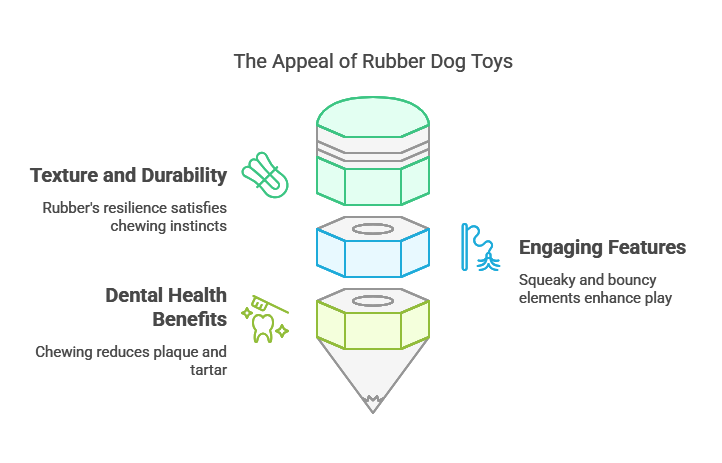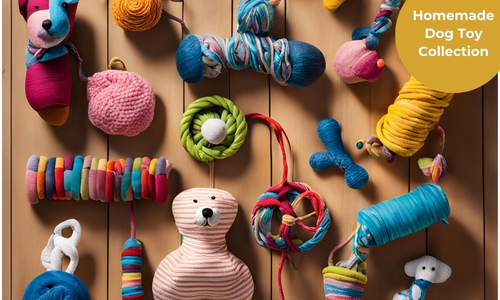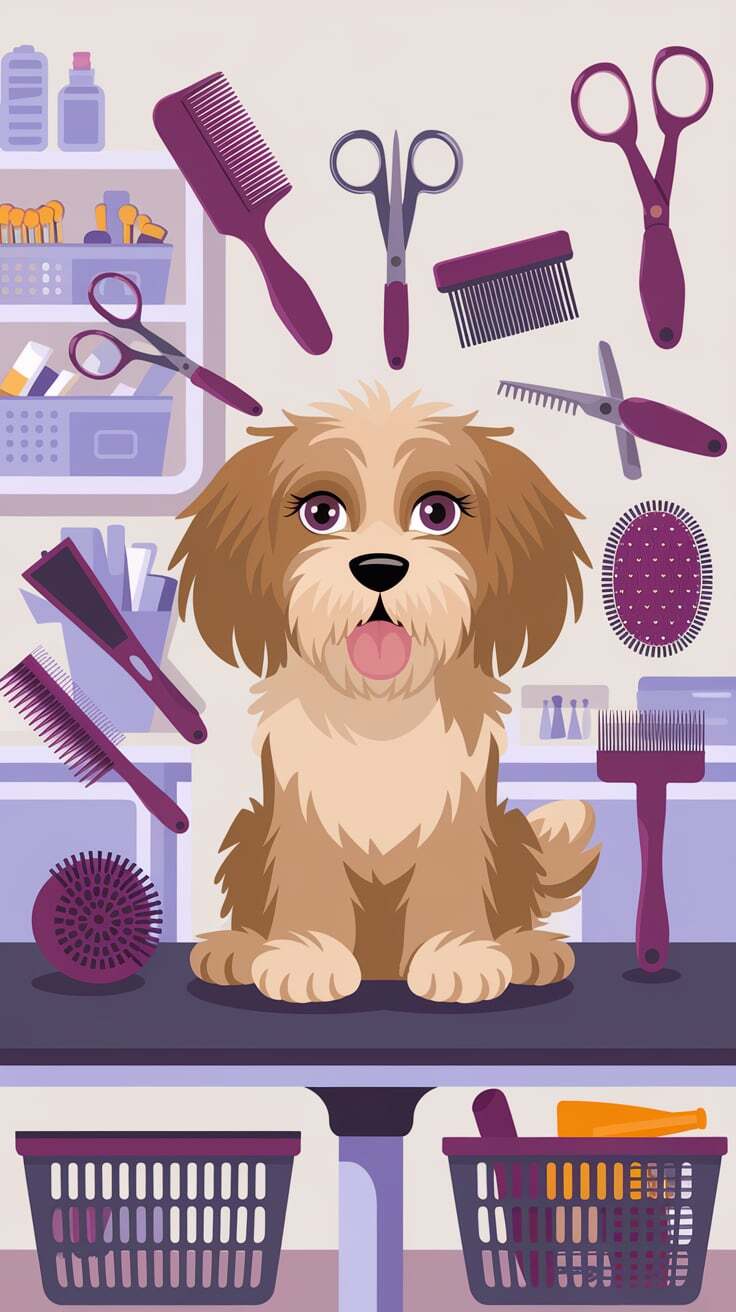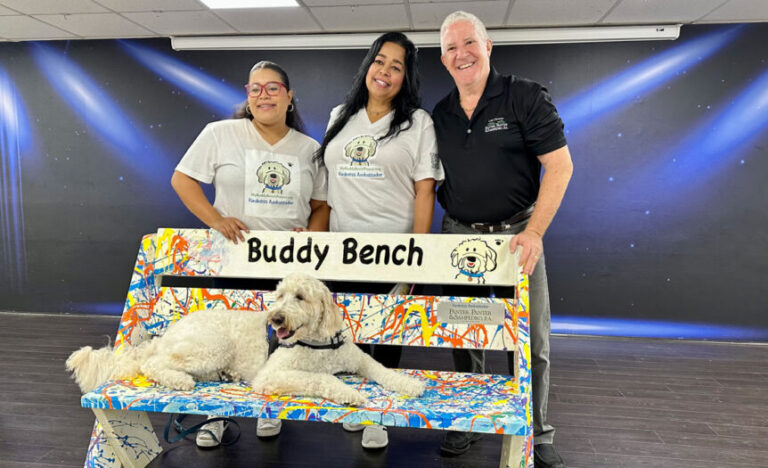Why Do Dogs Love Rubber Toys? The Surprising Truth Revealed!
Ever wondered why dogs go crazy over rubber toys? The answer is simple: rubber toys satisfy their natural instincts, provide mental stimulation, and are just plain fun!
As a lifelong dog lover, I’ve seen countless dogs, from playful puppies to wise old seniors, obsessed with their rubber toys. But why? According to Dr. Emily Roberts, a veterinary behaviorist, “Dogs are naturally inclined to chew, and rubber toys provide the perfect balance of resistance and flexibility, making them irresistible.”
Now, let’s dig deeper into why rubber toys are a dog’s best friend.
Read also: Are Rubber Toys Good for Dogs? The Truth Every Pet Parent Must Know

1. The Science Behind Dogs and Rubber Toys
1.1 Dogs Are Natural Chewers
Dogs chew for multiple reasons:
- Teething Relief – Puppies chew to ease discomfort when their teeth grow in.
- Stress Reduction – Chewing releases calming endorphins.
- Boredom Buster – Chewing keeps their minds engaged.
- Instincts at Work – Dogs are descendants of wolves, who chewed bones to survive.
Rubber toys meet all these needs in a safe and engaging way!
1.2 Rubber Has the Perfect Texture
Unlike plastic or plush toys, rubber has the ideal consistency:
- Soft but Durable – Provides resistance without damaging teeth.
- Bouncy & Fun – Moves unpredictably, keeping dogs entertained.
- Safe for Gums – Unlike hard bones, rubber doesn’t cause fractures.
Dr. Mark Hanson, a pet product researcher, explains, “Dogs love rubber toys because they mimic the texture of natural prey, offering a satisfying chewing experience.”
2. What Makes Rubber Toys So Special?
2.1 Engaging Scent and Taste
Many rubber toys come with flavors like peanut butter or bacon. According to a study by the American Pet Products Association (APPA), 78% of dogs prefer scented rubber toys over unscented ones.
2.2 Durability Matters
Unlike stuffed toys that tear easily, high-quality rubber toys last much longer, making them cost-effective for pet parents.
| Toy Type | Durability | Safety | Engagement |
|---|---|---|---|
| Plush Toys | Low | Low | Medium |
| Plastic Toys | Medium | Low | Low |
| Rubber Toys | High | High | High |
2.3 Dental Benefits
Many rubber toys come with ridges and grooves that help clean teeth and massage gums while dogs chew. The American Veterinary Dental Society (AVDS) states that 80% of dogs show signs of dental disease by age three, making rubber toys a great preventive tool.
3. Real-Life Examples: Dogs and Their Favorite Rubber Toys
3.1 Max the Golden Retriever
Max, my neighbor’s golden retriever, is obsessed with his rubber ball. The moment he hears it bounce, he sprints across the yard in excitement. His owner, Sarah, says, “We’ve tried every toy, but nothing keeps Max engaged like his rubber ball.”
3.2 Bella the Rescue Dog
Bella, a rescued pit bull, used to suffer from severe anxiety. After introducing a durable rubber chew toy, her anxiety significantly decreased. According to her trainer, “Chewing helped her build confidence and release stress.”
4. Choosing the Right Rubber Toy for Your Dog
Not all rubber toys are created equal. Here’s how to pick the best one:
| Factor | What to Look For |
| Size | Choose a toy appropriate for your dog’s mouth size. |
| Material | Opt for non-toxic, BPA-free rubber. |
| Texture | Consider ridged designs for dental benefits. |
| Durability | Look for “indestructible” rubber if your dog is a heavy chewer. |
Dr. Laura Mitchell, a veterinarian, advises, “Always supervise your dog with new toys to ensure safety and prevent choking hazards.”
5. FAQs About Dogs and Rubber Toys
Q1: Are rubber toys safe for all dogs?
Yes, but always choose high-quality, non-toxic rubber.
Q2: How often should I replace rubber toys?
Check for wear and tear monthly. Replace them if they show cracks or pieces missing.
Q3: What’s the best way to clean rubber toys?
Wash them with warm water and mild soap weekly to prevent bacteria buildup.
Q4: Can rubber toys help with separation anxiety?
Yes! Chewing provides comfort and reduces stress when dogs are alone.
6. Psychological Benefits of Rubber Toys
Rubber toys don’t just entertain—they provide mental stimulation. Dogs crave problem-solving activities. That’s why puzzle rubber toys, like treat-dispensing balls, are so popular!
6.1 How Rubber Toys Prevent Destructive Behavior
Many dog owners struggle with their pets chewing on furniture or shoes. The solution? Give them an engaging rubber toy! A study by the Humane Society found that dogs with interactive chew toys are 50% less likely to engage in destructive chewing.
6.2 Rubber Toys as a Training Tool
Trainers often use rubber toys for:
- Positive Reinforcement – Rewarding good behavior with a toy.
- Redirecting Attention – Preventing unwanted behaviors by offering a chew toy instead.
- Exercise & Play – Encouraging movement and mental engagement.
Must Check: 10 Must-Have Rubber Dog Toys Your Pup Will Absolutely Love
7. Conclusion: Why Rubber Toys Are a Must-Have
So, why do dogs love rubber toys? Because they fulfill their natural instincts, keep them entertained, improve dental health, and reduce anxiety!
As a dog enthusiast, I highly recommend keeping a good rubber toy in your dog’s collection. It’s more than just a toy—it’s a tool for happiness and well-being.
Next time you see a dog happily chewing on a rubber toy, remember—it’s not just fun, it’s fulfilling a deep-seated need.




![Is Mobile Dog Grooming an Essential Business? [20 Benefits]](https://petsqueue.com/wp-content/uploads/2024/06/image-3-768x513.jpg)

